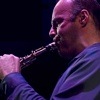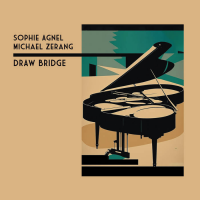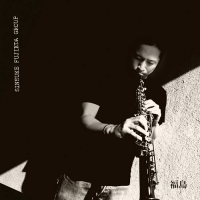Home » Jazz Articles » Album Review » Dan Willis and Velvet Gentlemen: The Satie Project
Dan Willis and Velvet Gentlemen: The Satie Project
Perhaps it is this, as well as the fact that the music is soothing, yet strangely exciting, that first attract modern musicians and composers such as Dan Willis. Willis was driven to explore Satie further and in depth, resulting in The Satie Project. The album is brimful of remarkable music, played with restraint and, often, high emotion by the ingenious multi-reed player, and a medium-sized ensemble comprising some of the finest musicians on the New York Scene. It must have been a challenging project to undertake, as all of Satie's music interpreted here was essentially composed for the piano. Willis has reinterpreted it for a considerably expanded group that includes trumpet, flugelhorn, trombones, B3 organ and accordion—and, of course, his generous assortment of reeds.
The moods vary, from the gentle and sweet on "I Idylle," to the slow, dolorous and grave, as on the three "Gymnopedie." Willis and his group play the music as Satie intended, largely following the composer's instructions. However, the transposition from piano to woodwinds, brass, strings and percussion is a vast, musically philosophical leap; one that Willis and his Velvet Gentlemen group have made with daring and majesty.
Willis seems to have grown right into the emotion of each piece, enabling him to determine just which reed instrument, from the bevy he brought to the recording, fits which mesmerizing part of the music. On the glassy music of the "Gnossiennes," for instance, Willis dallies often on single reeds like a soprano saxophone, melded in with double reeds including oboe or the Armenian duduk. The burnished glow of the "Gymnopedies" and "Nocturnes" come from risqué flushing of the sound canvas with the growling burble of the B3 organ and the squeezing, shrill whirling of the accordion, with accents from Willis and violinist Antoine Silverman.
The term "complete album" is often rather loosely used, but The Satie Project is one occasion where it is wholly appropriate, as the music passes from one tone poet—the beguiling Satie—to another, the incomparable reeds maestro, Dan Willis.
Track Listing
Second Gymnopedie; Nocturne # 2; I Idylle; Nocturne # 3; Third Gymnopedie; First Gnossienne; Nocturne # 4; First Gymnopedie; III Meditation; Nocturne # 1; II Aubade; Second Gnossienne; Nocturne # 6; Nocturne # 5; Olga Polka.
Personnel
Dan Willis
saxophoneDan Willis: tenor saxophone; soprano saxophone; oboe; English horn; Flute; piccolo, clarinet, bass clarinet, duduk; Chuck McKinnon: trumpet, flugelhorn, electronic pedals; Pete McCann, electric guitar, acoustic guitar; Ron Oswanski: B3 organ, accordion; Kermit Driscoll: electric bass, double-bass; John Hollenbeck: drums, percussion; Jonathan Owens: trumpet; Tim Sessions: tenor trombone, bass trombone; Richard Sosinsky: double-bass (2); Antoine Silverman: violin.
Album information
Title: The Satie Project | Year Released: 2010 | Record Label: Daywood Drive Records
Tags
PREVIOUS / NEXT
Support All About Jazz
 All About Jazz has been a pillar of jazz since 1995, championing it as an art form and, more importantly, supporting the musicians who make it. Our enduring commitment has made "AAJ" one of the most culturally important websites of its kind, read by hundreds of thousands of fans, musicians and industry figures every month.
All About Jazz has been a pillar of jazz since 1995, championing it as an art form and, more importantly, supporting the musicians who make it. Our enduring commitment has made "AAJ" one of the most culturally important websites of its kind, read by hundreds of thousands of fans, musicians and industry figures every month.



















